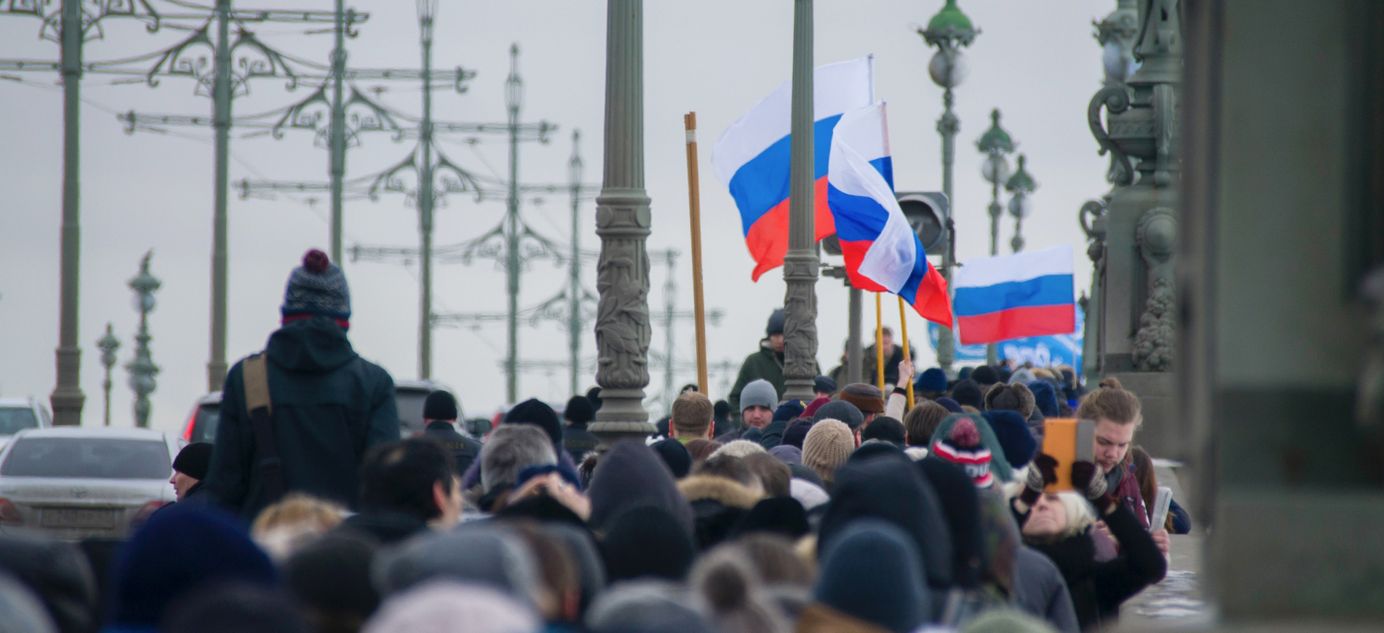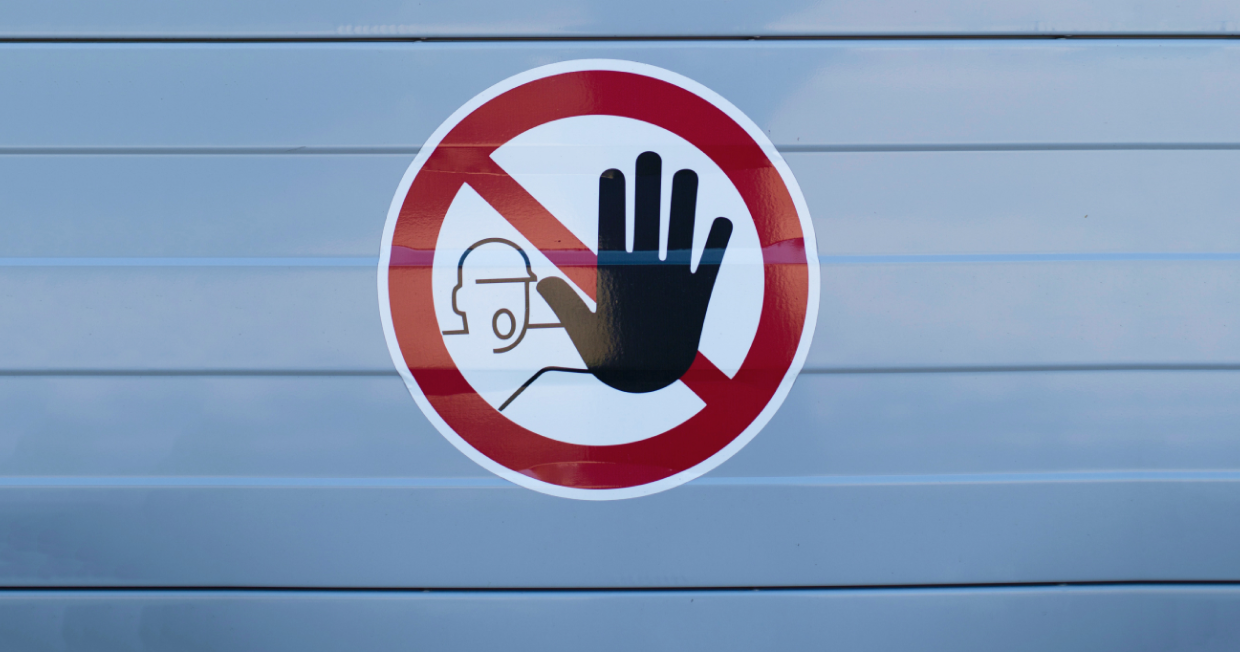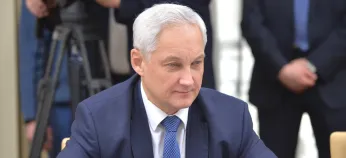
Scandal at Kommersant threatens the Kremlin’s light-touch censorship policy
Hello! This week we take a look at the big conflict over censorship that has erupted at one of Russia’s leading newspapers and the fancy new residence that the head of the Russian Orthodox Church is building for himself outside of St. Petersburg. We also have the highlights of an interview with Oleg Roginsky, a Ukrainian-born businessman whose AI company is attracting investment from big U.S. internet players, and a short story about a rare victory for Russian protestors.
Scandal at Kommersant threatens the Kremlin’s light-touch censorship policy
All the politics reporters and editors at influential newspaper Kommersant have resigned after the newspaper’s owner, billionaire Alisher Usmanov, demanded the resignation of the authors of an article about Valentina Matvienko, the speaker of Russia’s upper house of parliament. Kommersant was a trailblazer for independent media in post-Soviet Russia, but in recent years it has become a publication that works within limits set by the Kremlin. The newspaper is allowed to maintain some editorial independence, but is subject to censorship on political topics. The mass resignation of journalists will now call this arrangement into question.
What happened
On Monday, two political journalists from Kommersant announced they had been fired on the request of the shareholders. The reason for their firing was an article (Rus) which, citing anonymous sources, said that Matvienko was leaving her post and would be replaced by Sergei Naryshkin, the head of the SVR, Russia’s foreign intelligence service. Kommersant’s entire political department then quit in solidarity: 13 people in total.
It is not entirely clear why the article upset the authorities so much. A spokesperson for Usmanov said in an interview with The Bell that he “received a signal” (a phrase that sounds like spy-talk) that the article was paid for. He demanded the journalists reveal their sources to Kommersant’s editor-in-chief. Normally, this would be a reasonable request, but the editor-in-chief is close to Usmanov and the journalists don’t trust him — so they refused.
Why it matters
- Kommersant is historically one of the most important media outlets in Russia. It was the first private, independent national newspaper to appear after the fall of the Soviet Union and for more than 20 years it was the gold standard for the media industry, producing some of the country’s best journalists (most of the popular, quality media outlets today — like RBC, Vedomosti and Meduza — are run by Kommersant alumni).
- Kommersant wouldn’t be Kommersant without Kremlin correspondent Andrei Kolesnikov. In the early 2000s, he filed clever write-ups of President Vladimir Putin’s public events that entertained people in the president’s inner circle and made him Putin’s favorite journalist. This gave Kommersant significant influence.
- In the early 2010s, Kommersant became a symbol of so-called light-touch censorship, which arose as the Kremlin didn’t want to impose total control over high-quality media outlets (which would have led to the resignations of journalists and declining audience numbers), but it did want a veto over politically sensitive stories. At first, the authorities were cautious with Kommersant and censorship was rare (stories about Putin’s family were one of the taboo topics). This approach was particularly evident in the difference between the articles on the paper’s website and in its print version — Putin was widely believed to read the print version.
- For several years, this situation suited everyone: bans on specific subjects gave journalists the ability to publish groundbreaking articles on other controversial topics, including about Russia’s true losses in the war in eastern Ukraine.
- But the mass exodus of journalists this week might destroy such a consensus. Even during a big censorship conflict in 2011, no one quit in protest. In addition to the resignations, 230 of the newspaper’s employees wrote an open letter in support of their colleagues.
- Comments by Putin’s press secretary, Dmitry Peskov, who voiced support for the journalists, suggest that the authorities don’t have a unified position over how to respond. But that won’t stop the Kremlin from drawing conclusions: the light-touch censorship model no longer works, and relations with nominally independent outlets could be re-structured. Now, with a new law that makes the distribution of “fake news” an offense, there will be a temptation to further curtail editorial independence.
Why the world should care
If the result of the Kommersant scandal is a Kremlin crackdown on semi-independent media, the list of reliable sources information about Russia will need to be rapidly re-evaluated.
Disclaimer: This author worked for almost a decade as a journalist at Kommersant.
The Russian Orthodox Patriarch is getting a new, fully-automated residence
What happened
The search for luxury out-of-town estates owned by top Russian officials is an established tradition among Russian and foreign journalists and anti-corruption activists like Aleksei Navalny. Occasionally, it can get a bit boring — yes, officials have a lot of properties, so what? But there are still surprises. This week, The Bell reported on the construction of a new “smart home” near St. Petersburg for Russian Orthodox Patriarch Kirill.
The news of the residence was widely discussed because the Russian Orthodox Church has been attracting a lot of controversy. In recent weeks, the proposed construction of a church in a central park in Yekaterinburg has sparked mass street protests.
- All documents about the residence in Tsarskoe Selo, a town outside St. Petersburg where the Russian tsars had a famous palace, are classified. It is not a new building, but a historical one that was begun in the early 20th century. The last patriarch, Aleksei II, had the idea to restore the building under the supervision of the Russian Orthodox Church, but money was never found for the project.
- Now, as The Bell discovered, approximately $43 million has been earmarked. The funds were allocated by the Kremlin department responsible for overseeing the most important state construction projects.
- The residence will include a small chapel, a living room, a library with a billiard table, an elevator and a bedroom. All of the rooms will be served by an automated “smart home” system, and the interior looks a bit like a nice suite in a luxury hotel. There will also be VIP-rooms in the same complex, and more modest rooms for Kirill’s entourage.
- After the publication of The Bell’s story, spokespeople for the Orthodox Church denied that such a residence was even being built. They told journalists that there will simply be “some spaces” for Kirill and members of the Synod. For ordinary visitors, there will be a museum, they added. But then the St. Petersburg-based media outlet Fontanka uncovered (Rus) more details — including images — that showed the level of luxury and revealed less than 5% of the available floor space will be for the museum.
- The head of the Russian Orthodox Church has been several times for a not very modest way of life: in 2012, an expensive Breguet watch was seen on his wrist, and, last year, Kirill flew (Rus) to Yekaterinburg on a private jet worth $25 million (loaned by an Urals-based businessman). Many experts characterize the Russian Orthodox Church as — at least from an economic point of view — a very large, and profitable, corporation.
Why the world should care
It has become increasingly clear in recent years that the authorities see Russia less and less as a secular state. But news of Kirill’s residence is yet more proof that representatives of the Russian Orthodox Church still want to live very secular lifestyles.
Oleg Roginsky on AI, the war in Ukraine and how to be a good salesman
This week, People.ai, an automated sales service built on artificial intelligence founded by Oleg Roginsky, closed a $60 million round of financing to be valued at $500 million. The largest participant was Iconiq Capital, a private fund managing money from the family offices of famous businessmen, including Mark Zuckerberg. The Bell founder Liza Osetinskaya recently interviewed Roginsky, who was born in Ukraine. Here are the most interesting quotes:
How he got to the U.S.
“I went to an English language school. I had an English teacher who travelled a lot throughout her career. A second teacher taught us lessons about different countries — before that he had been an ambassador for the Soviet Union…. He spoke about what it was like in other countries. Both of them made me want to go abroad… In my last year of school, I won a small contest and went to England for a month, and I really enjoyed it — it was a totally different approach to education… And then I — also by accident — was accepted to Boston University.”
On programmers from Ukraine
“Part of our team is based in Kiev. In Ukraine, it has become very trendy to be a programmer. In Russia, software engineers are always paid in rubles, but in Ukraine they are always paid in U.S. dollars. Therefore, when after [the beginning] of the war [in 2014] and Ukraine’s currency fell, their real income became 5 times larger than everyone else’s. They became the top 1-2% in terms of income. What happened next? No-one wants to be a doctor or a lawyer; everyone wants to be a software engineer. This situation [the war], to be honest, really helped Ukraine, because it created a culture of engineers.”
How he founded the company
I was a salesman… Every salesperson comes to work, sits down, and plans his work… the bad ones do it randomly, the good ones are structured. Both statistically don’t know what exactly will be most beneficial. They use their intuition, but we use data. Like Uber: before we had it, what kind of data did we have about a taxi driver’s activity? A call once an hour. Uber introduced a mobile app on the driver’s phone and began to receive real time information about the movements of every taxi driver. This created enough data for machine learning. We do the same thing — just with office workers. We gather data about their activity in order to understand how to optimize, and later, to predict, the most effective way of working for each employee. Their individual capacity then increases by 20-30%.”
How he found his first client
“My first client was Lyft. One sales leaders wrote a blog post about a dream that someday salespeople won’t have to enter data into a CRM system… In response, I wrote him a letter each week for three months. In the end, he met with me, he became my first client, and we built a system which he still uses to this day.”
Can AI replace a people?
“Classical machine learning is really similar to how intuition works. If you have seen a situation 1000 times, then the 1001st time, based on prior experience, you understand what will likely happen. My theory is that machine learning will replace all means of working when you are making decisions based on experience and intuition. AI can’t replace people in creative things. Computer won’t be able to create anything new any time soon. Therefore, that is what we must learn. Secondly, it is very difficult to use AI to replace any kind of work which is based on relationships between people. Small sales for $100, $200, $5,000 can all be automated. But complex multi-million dollar sales which take a year to complete will always need people.”
The dangers of AI
“Through history, each time human productivity increases significantly, either the number of jobs decreases, or a avenue was needed to let off steam, like colonization in the 16th century. Or a war began; World War I or World War II. If you follow this logic, then… we can expect a very unpleasant next 30 years. We should create programs that will re-train people in those professions that will always been in demand. For example, programming. Someone will always need to repair robots. I support the idea of a minimum income: it is necessary to remove the pressure on society when AI has replaced most jobs.”
In Brief:
Protestors in Yekaterinburg claim victory
It looks like non-political protest in Russia can be successful. Last week, we reported on demonstrations against the building of a church, financed by local billionaires, on the site of a park in Yekaterinburg. Even then it was clear that the Kremlin was having difficulty determining its relationship toward such an apolitical, if threatening, street protest. This Wednesday, we learnt that the demonstrators had won. State-owned pollster VTsIOM published results from a survey in which 74 percent of local residents said they were against the church. Immediately, the mayor of Yekaterinburg announced that the church construction will not go ahead.




